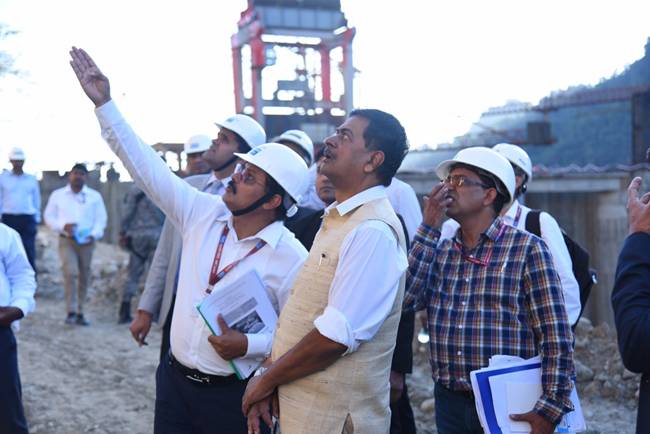In a recent development, Union Minister for Power and New & Renewable Energy, R.K. Singh, conducted an inspection of the ongoing construction activities at the 2000 MW Subansiri Lower Hydroelectric Project situated in Arunachal Pradesh/Assam. The minister scrutinized key project components, including the dam, intake structures, and diversion tunnels in Gerukamukh, Assam.
Key Developments at the Subansiri Project
During his visit, Singh held a comprehensive review meeting where he received briefings on various measures taken to overcome challenges encountered in the project. Addressing officials from NHPC and representatives of major contractors, Singh urged everyone to work diligently to ensure the project’s timely completion.
Rising Significance of Hydel Projects
Singh emphasized the growing importance of hydel projects in the context of the increasing demand for round-the-clock renewable energy. While acknowledging the progress of solar and wind energy initiatives, Singh highlighted the indispensable role of hydropower in achieving energy transition goals and reducing emissions.
Expanding Hydropower Capacity in India
India’s hydropower capacity is on the rise, with the Subansiri project being a significant contributor. The Government of Arunachal Pradesh has entered into Memorandums of Understanding (MoUs) with central public sector undertakings for 13 projects, collectively amounting to a hydroelectric capacity of 13,000 MW in Arunachal Pradesh. This initiative is expected to attract an investment of approximately Rs. 1.4 lakh crore, leading to a substantial increase in per capita income.
Power Growth in Jammu & Kashmir
Singh highlighted the progress of five hydel projects under construction in Jammu & Kashmir, indicating a positive trajectory for hydro potential in the region. Significant investments are pouring in, further supporting the growth of hydropower in the country.
Addressing Power Demand Challenges
With India’s power demand experiencing a substantial 20% growth in August, September, and October 2023 compared to the previous year, Singh underscored the need for rapid addition to power capacity. The minister emphasized that despite the current growth, India’s power consumption remains lower than that of developed countries, presenting both a challenge and an opportunity.
India’s Leadership in Energy Transition
Singh asserted India’s position as a global leader in energy transition, highlighting achievements such as surpassing the target of making 40% of the country’s capacity from non-fossil-fuel sources by 2030, achieved in 2021, nine years ahead of schedule. The minister emphasized India’s responsible growth path and its commitment to environmental sustainability.




